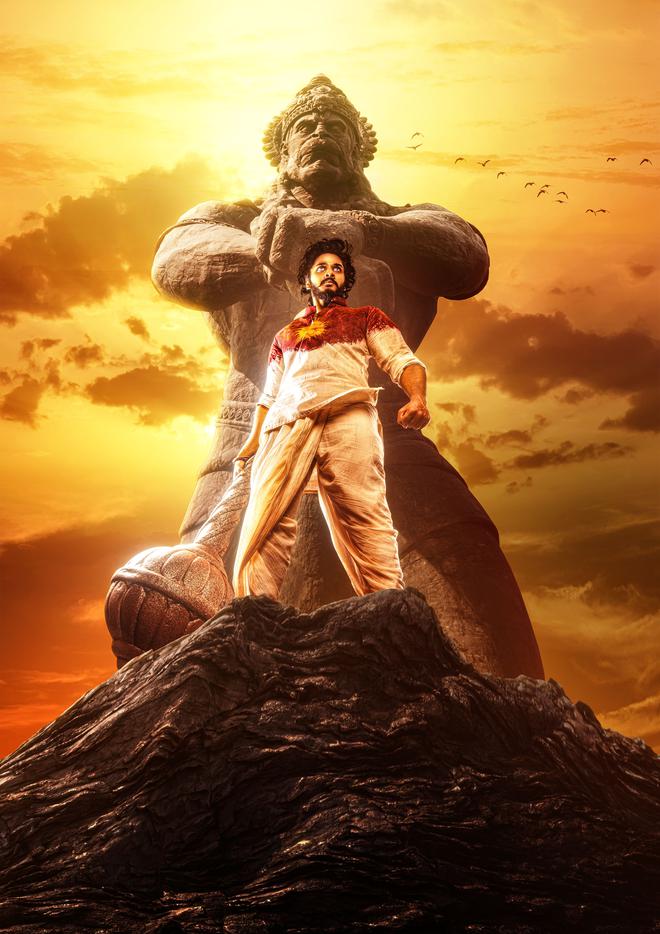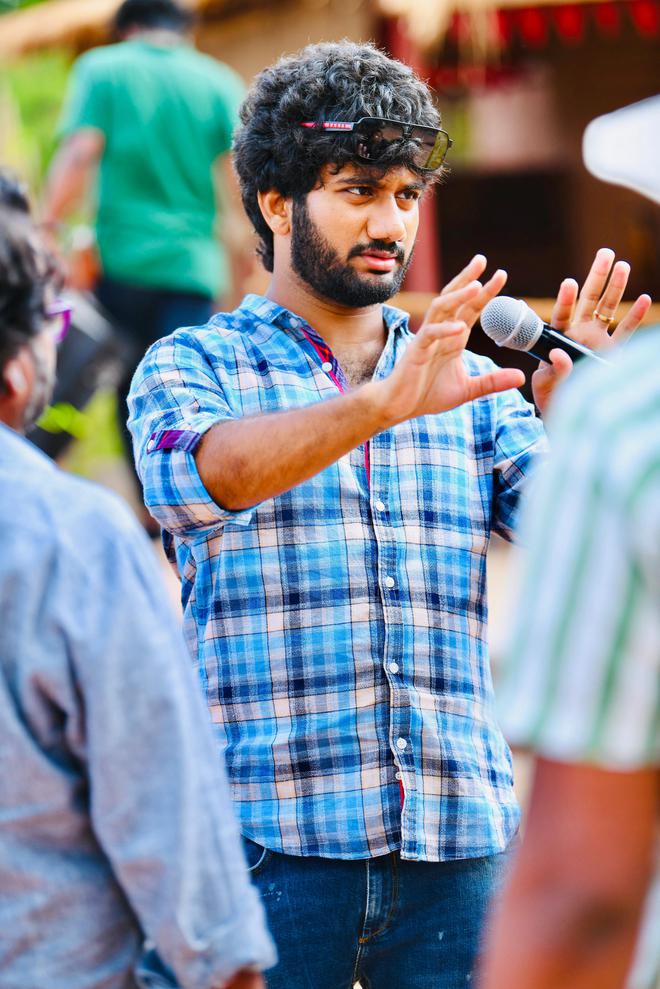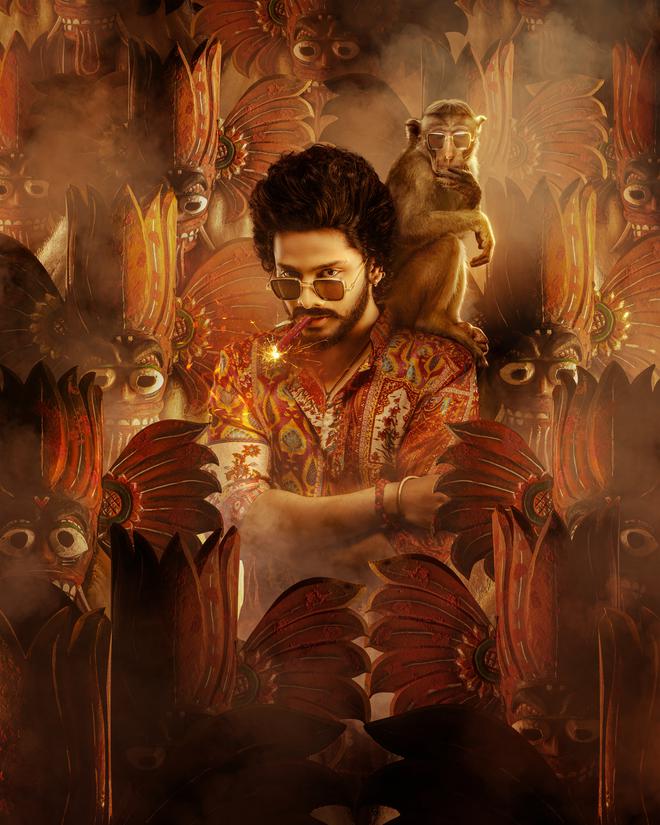HanuMan, the first superhero Telugu film in the Prasanth Varma Cinematic Universe (PVCU), which is poised to release on January 12, has generated interest among moviegoers for its slick visual effects. Starring Teja Sajja as an underdog from the fictional town of Anjanadri, the film explores how he becomes the chosen one to benefit from the superpower of Lord Hanuman and turns a superhero. At his spacious office that functions like a mini studio in Manikonda, Hyderabad, director Prasanth Varma tells The Hindu that his film is not a spectacle like Avatar or Baahubali, but a well-crafted, low-budget superhero film with a narrative structure similar to that of a Disney or a Chandamama comic.

“Teja’s character has a sister (Varalaxmi Sarathkumar), a girlfriend (Amritha Aiyer) and encounters a few problems. How he gets strength from Hanuman and what happens thereafter will drive the story forward,” says Prashant. It has taken three years since the origin of the idea to bring the film closer to its release. The director terms the process “a learning curve”.
Rajamouli’s guidance
At different stages of the film, Prasanth sought the advice of ace director S S Rajamouli and says that technical knowledge and hands-on working methods help, even if there is a dedicated team that looks into the VFX. “We worked with a limited budget and could not afford big studios. We worked with three emerging VFX studios, in which there were technical people who had worked on Rajamouli’s films. They would tell me how Rajamouli sir would sit with them, monitor the developments closely and, at times, take the mouse from their hand to do minute adjustments. I followed a similar method. For example, it can get tough to keep explaining how much depth you are looking at for a visual and it is easier to do the minor adjustments yourself.”
An underdog superhero
Prasanth credits Rajamouli for pulling off a seemingly improbable feat for Eega (2012), which would be a challenge even today. Beyond technical aspects, he sought the director’s guidance for the overall presentation of the film. HanuMan began as a Telugu film and grew exponentially “just like the lord himself who grew from strength to strength” and plans were on to dub and release it in 11 languages. “Rajamouli sir told me not to schedule the release in all languages at the same time since it would be too much to handle. So we will release in Indian languages first and then foreign languages, including French.”
Writing team
The story of HanuMan came from Prasanth and was then developed by his team at Scriptsville, a writing team he co-founded with his sister Sneha. Talking about Telugu cinema’s recent phenomenon of engaging with a writers’ room, Prasanth says the term is an extension of what used to be story discussions in earlier years. The advantage lies in getting varied perspectives, with respect to social moorings of different characters and gender-wise insights. However, the final call, he says, rests with the director who should decide what would be best suitable for a film. Prasanth adds that it is imperative to clearly spell out the credit and compensation for writers, to avoid conflicts.

Fictional, parallel world
HanuMan will unravel in Anjanadri, a town set in a parallel universe. The country is named Akhand Bharat and Prasanth says it gave him ample creative liberty, “I wanted to imagine an India that has not been through Mughal and British invasions. Akhand Bharath is a contemporary parallel world. The people behave very much like we do. Baahubali has been released in that world too. But they do not have a city like Mumbai.”
This parallel world will be the stage for further superhero films that will roll out after HanuMan. In the pipeline are Athira and an untitled film that will have a female superhero. Prasanth is eager to rope in a female director for the latter film. “I will not be directing all the superhero films in this universe, since I want to dabble in other genres. We have spent considerable time in world building, detailing the history of the parallel world and we have a blueprint for all the films. We will begin work on these films soon after HanuMan’s release.”
‘HanuMan’ studio
Considerable portions of HanuMan were filmed in Vattinagulapally on the outskirts of Hyderabad where a temporary studio called Hanuman Studio was set up, with the help of production designer Nagendra. “We leased a land in Vattinagulapally and filmed plenty of ‘green screen’ shots (For the uninitiated, a large green backdrop is placed in the background of a shot for which visual effects will be added later during post production). Now that area is called Hanuman Studio and other film shoots are also happening there. For wide angle visuals, we travelled to Paderu and Maredumilli.”

For one of the sequences, an outdoor scenario was replicated in a massive indoor set to ensure ideal lighting conditions. “A lot can change according to wind speed and light conditions. For one sequence we wanted things to be in our control and it was gracious of our producer, Niranjan Reddy, to agree to replicate the outdoor environs as an indoor set at the cost of ₹65 lakh.”
HanuMan involved 120 shoot days and plenty of time in pre- and post-production. “We did storyboarding, looked at videos of how other superhero films were made, realised there were practical difficulties while filming, and returned to the drawing board for problem-solving. There was never an easy shoot day. We had challenges at every step. For example, we thought we could shoot ‘superspeed’ sequences easily but making the hero run bare feet was a challenge. We are not used to running with bare feet. So, some changes needed to be made in how we film these portions.”
The techniques used in the film, Prasanth explains, involve superspeed, unreal engine, basic matte painting, 3D, AI (Artificial Intelligence), and more. “AI helps speed up the process. What can take a couple of months can be done in a week. Post-release, we plan to put out videos of how a few sequences were done.”
HanuMan has around 1,600 VFX shots, which constitutes approximately 30% of the film. “Rats, a cheetah, a tiger and a monkey were generated through VFX and there are a few extensions and scenes where the audience will not be able to differentiate the real from the tech-generated,” he adds.
Prasanth, who has until now watched HanuMan over a 100 times during post- production, was eager to see how the audience would connect with the narrative. He held two test screenings, inviting people from different backgrounds and age groups. “They told me that the emotions are good; nothing could have made me happier. It is good to have cutting edge technology to tell your story but the emotional core has to work. I used to get feedback that my earlier films were high on style but not on the emotional connect; so this time I made sure we cracked this aspect as well.”







